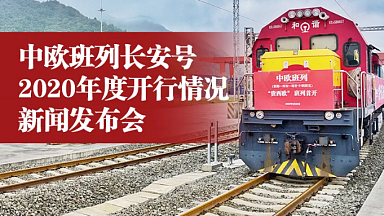The Russian enclave of Kaliningrad has been on the map a little longer. The ports of Baltijsk and Seeport Kaliningrad have been important nodes, where cargo sent by train from China arrives for further transportation to Europe. Hamburg has been among the dominant destinations. More recently, the German ports of Rostock and Mukran, that could be reached by short-sea connections from Kaliningrad, started gaining importance.
New lines
On 12 November, a freight train from China arrived on the German island of Rügen, docking at the Baltic Sea port of Mukran. It had just crossed the Baltic sea by ferry, originating from the port of Baltysk in the Kaliningrad region of Russia. It had gotten there by railway from China. From Mukran, it continued its journey by rail to Hamburg.
On 5 April a test train arrived at the Kaliningrad Marshalling Yard on 5 April. It consistsed of forty-nine 40-foot containers with consumer goods. After being reloaded in the Kaliningrad Sea Commercial Port, the cargo was sent by sea to the port of Rostock on the same day.
Hinterland
The ports each have a well-developed hinterland railway network «In recent years, the state of Mecklenburg-Western Pomerania has increasingly invested in the expansion of the infrastructure of the hinterland connection. As a result, we can now offer very fast transfer times of between four and eight hours within Germany. For example, trains reach Hamburg within four hours, the industrial centre of the Ruhr area is reached in eight hours and is supplied with important goods for production», says Mecklenburg-Western Pomerania’s Transport Minister Christian Pegel.
He continues: «Likewise, the densely populated and highly industrialized south of the state can be quickly supplied with supplies via the Mukran Port and Rostock Port. The Sassnitz port with its extensive areas, the well-developed 90-kilometre-long rail network and direct access to the open sea is an excellent location as a logistics hub for international multimodal transport within the framework of the New Silk Road».
Partnership
As far back as September 2019, the decision to intensify cooperation between the GETO and International Coordinating Council on Trans-Eurasian Transportation (CCTT) set the stage for the creation of this new Silk Road route.
Together, GETO and CCTT have developed proposals for the use of both innovative technologies and existing IT solutions and contributed to their implementation. This preparatory work of the CCTT and GETO has led to a coordinated network of industry, public authorities, existing terminals and rail networks, from which not only GETO, but also Mukran Port and UTLC ERA, who are CCTT Standing Members, now profit, the companies explain.
Crisis solution
With the establishment of the Silk Road sea route as an alternative to the proven land routes, UTLC ERA in particular is sending a strong signal in the current global crisis situation. The closer linking of two different modes of transport is intended to maintain the flow of cargo both on land and at sea, the operator says.
Alexei Grom, President of UTLC ERA: «The choice we offer European shippers in terms of new logistics solutions and directions is particularly important today. The advantageous geographical locations of the ports of Mukran and Rostock will allow to significantly shorten the time of delivery of cargoes from Scandinavia to China, thus eliminating the need for cargo consolidation in the heart of Europe.»
Crucial role
Harm Sievers, President of GETO, sees great potential for all routes of the New Silk Road, especially in the current period: «The Asian region is already beginning to recover from the corona crisis. In times of normaliwation, the container train connection will play a major role, as it represents a powerful alternative transport corridor. It is therefore extremely important to use and further develop its potential. Above all, we must work on coordinating rail transport in Europe, Russia and Asia together to improve the Silk Road as a whole».



